|
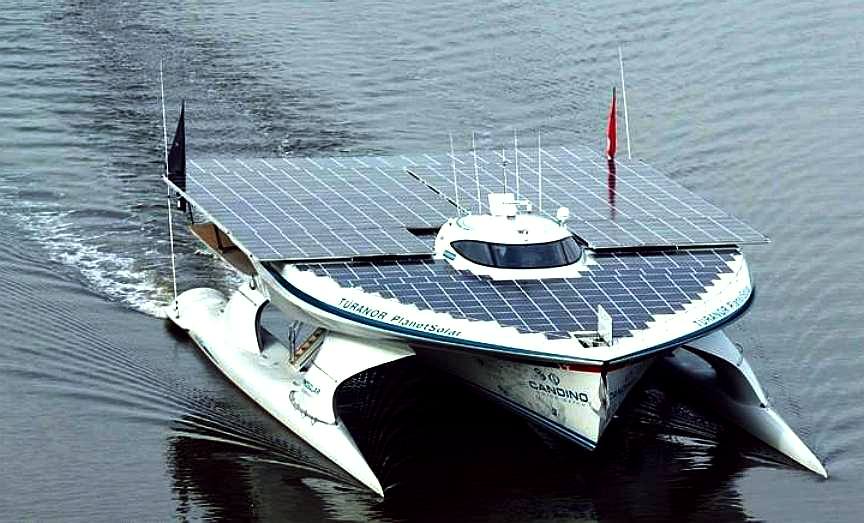
The
PlanetSolar September 2013, note distinctive wave pattern PARIS
10 SEPT 2013 During
their stay in Paris the PlanetSolar crew and the University of Geneva
have an exhibition on the scientific expedition "PlanetSolar Deepwater" in partnership with the Mayor of the 15th arrondissement of Paris. This exhibition proposed in greenhouses Orangerie Parc André Citroën in Paris, Thursday, Sept. 12, aims to raise awareness of the objectives of "PlanetSolar Deepwater" scientific expedition this summer along the Gulf Stream.
The public will have the opportunity to familiarize themselves with the scientific aspects of climate research and discover the features of MS Tûranor PlanetSolar, the first ship to have completed a world tour exclusively by solar energy.
Among the events celebrating the conclusion of the latest mission, are the "SolarSoundSystem" (musical entertainment powered by the sun), the evenings philanthropic and ship visits by schoolchildren. An exhibition dedicated to the scientific expedition "Deepwater" in the presence of the crew and some researchers, will be open to the public Thursday, September 12, 14 heures at 17 o'clock in the greenhouse of the Orangerie du Parc André Citroën . The end of the 2013 campaign will gather during the 5 days of many partners and supporters.
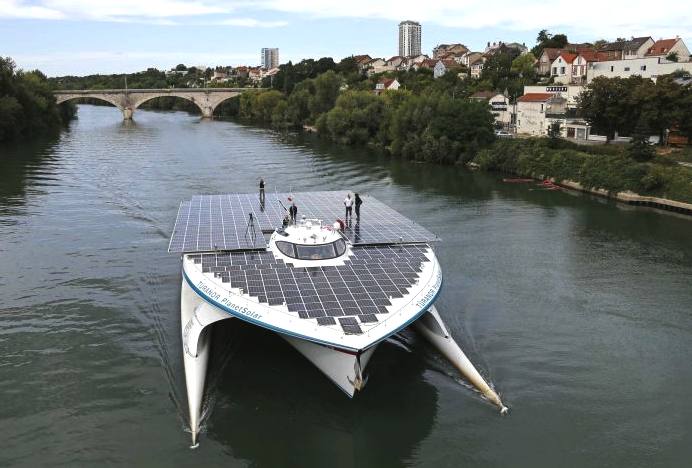
RIVER
SEINE 7 SEPTEMBER 2013 “Happy is he who, like the Seine, follows his course from his bed”
This alexandrine, engraved with the edge of a pocket knife on an old desk in the sinister Breton boarding school where I (painfully) endured 6th grade, seemed at the time to be the result of a brilliant inspiration from one of my predecessors.
Today, I do not know if the Seine is happy, but I can tell you that the TPS crew is.
Already, before entering the estuary, a passage under the cliffs of Etretat at sunset gave us a taste of what was to come, but then, what a sight, yesterday and today, and what better way to return to France after an over 5-month journey than this majestic spectacle.
However, please do not think that freshwater navigation is a bed of roses. Tomorrow we expect a lock, barely wider than our solar panels
- even when they are completely folded in. We are hoping for a 10-cm margin on each side that the engineers from Waterways of
France will help us negotiate as best we can!
Apart from the friction risk, the TPS is happy, too. She entered her second life brilliantly by carrying out the Deepwater mission on behalf of the University of
Geneva. The TPS demonstrated that she could be a platform that perfectly suited the needs of thirteen (must be verified) scientists who succeeded one another onboard, and that she also represented a wonderful communication tool, capable of inspiring hundreds of visitors during her stopovers.
Our next step will be Paris, in front of the André Citroën Park on September 10th at 1:30 pm, after having greeted the “small” Statue of Liberty in the background of the Eiffel Tower. Grandiose!
Gérard 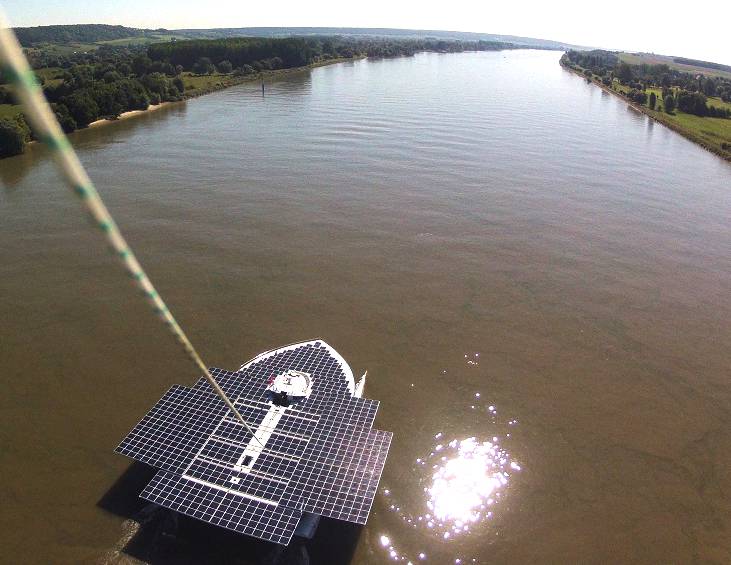
PlanetSolar September
7 2013 navigating along the River Seine, to Paris FRANCE ROUEN (Seine-Maritime). The MS Tûranor PlanetSolar, the largest solar boat in the
world at this time, made
a stop for a night in the port of Rouen on Thursday September the 5th. It
made its appearance in Rouen waters around 17 h 30-18 h.
At the helm of this extraordinary ship is a seasoned adventurer of the seas: Gerard d'Aboville.
Compared to his rowing of the Pacific and
Atlantic oceans this cruise in
the MS Tûranor PlanetSolar must seem like a holiday. The next port of call is Paris where
the vessel will be exhibited from Tuesday 10 to Monday, September 16.
MS Tûranor The PlanetSolar is the largest solar boat
built to date at 31 meters by 16 meters and 89 tons, including 512 m² of photovoltaic cells powering six blocks of lithium-ion
batteries,
for two electric motors of 120 kilowatts each. (There is a record contender
to the longest/widest boat, now under development. See comment below)
PlanetSolar arrives after visiting London
ending a campaign of scientific measurements of more than 8,000 km along the Gulf Stream, in collaboration with the
University Geneva
(UNIGE). Rouen and Paris come after the MS Tûranor PlanetSolar's stops in Miami, New York, Boston, Halifax, St. John's, Ostend and London.
At
Rouen the MS Tûranor PlanetSolar will be moored in the late afternoon afternoon to honor pontoon Jehan Ango the Port of Rouen, right bank, dock Boisguilbert.
She sets sail again on Friday morning early heading upriver to Paris.
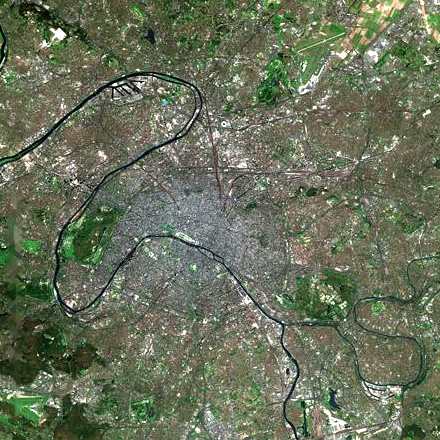
A
satellite picture of Paris, France, showing the Seine River snake pattern
PARIS Paris (French: paʁi) is the capital and most populous city of France. It is situated on the River Seine, in the north of the country, at the heart of the Île-de-France region. Within its administrative limits (the 20 arrondissements), the city had 2,234,105 inhabitants in 2009 while its metropolitan area is one of the largest population centres in Europe with more than 12 million inhabitants.
An important settlement for more than two millennia, by the late 12th century Paris had become a walled cathedral city that was one of Europe's foremost centres of learning and the arts and the largest city in the Western world until the turn of the 18th century. Paris was the focal point for many important political events throughout its history, including the French Revolution. Today it is one of the world's leading business and cultural centres, and its influence in politics, education, entertainment, media, science, fashion and the arts all contribute to its status as one of the world's major cities. The city has one of the largest GDPs in the world, €607 billion (US$845
billion) as of 2011, and as a result of its high concentration of national and international political, cultural and scientific institutions is one of the world's leading tourist destinations. The Paris Region hosts the world headquarters of 30 of the Fortune Global 500
companies in several business districts, notably La Défense, the largest dedicated business district in Europe.
Centuries of cultural and political development have brought Paris a variety of museums, theatres, monuments and architectural styles. Many of its masterpieces such as the Louvre and the Arc de Triomphe are iconic buildings, especially its internationally recognized symbol, the Eiffel Tower. Long regarded as an international centre for the arts, works by history's most famous painters can be found in the Louvre, the Musée d'Orsay and its many other museums and galleries. Paris is a global hub of fashion and has been referred to as the "international capital of style", noted for its haute couture tailoring, its high-end boutiques, and the twice-yearly Paris Fashion Week. It is world renowned for its haute cuisine, attracting many of the world's leading chefs. Many of France's most prestigious universities and Grandes Écoles are in Paris or its suburbs, and France's major newspapers Le Monde, Le Figaro, Libération are based in the city, and Le Parisien in Saint-Ouen near Paris. 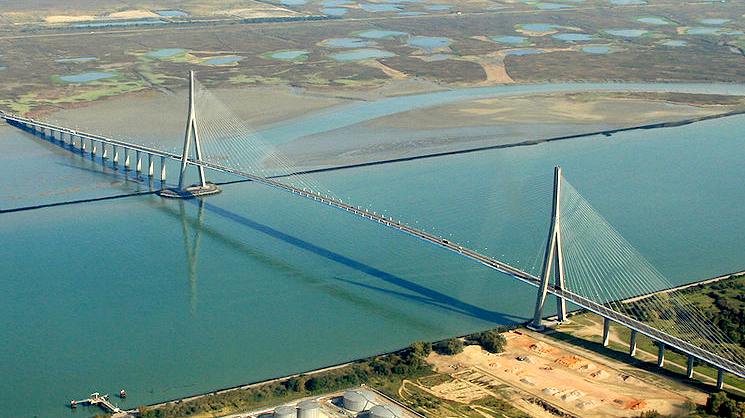
Pont de
Normandie suspension bridge
across the River Seine RIVER
SEINE The Seine (French: La Seine, pronounced:
la sɛːn) is a 776 km long river and an important commercial waterway within the Paris Basin in the north of France. It rises at Source-Seine, 30 meters northwest of Dijon in northeastern France in the Langres plateau, flowing through Paris and into the English Channel at Le Havre (and Honfleur on the left bank). It is navigable by ocean-going vessels as far as Rouen, 120 km (75 mi) from the sea. Over 60% of its length, as far as Burgundy, is negotiable by commercial riverboats and nearly its whole length is available for recreational boating; excursion boats offer sightseeing tours of the Rive Droite and Rive Gauche within the city of
Paris.
There are 37 bridges within Paris and dozens more spanning the river outside the city. Examples in Paris include the Pont Louis-Philippe and Pont Neuf, the latter of which dates back to 1607. Outside the city, examples include the Pont de Normandie, one of the longest cable-stayed bridges in the world, which links Le Havre to Honfleur.
The Seine is dredged and oceangoing vessels can dock at Rouen, 120 km (75 mi) from the sea. Commercial riverboats can use the river from Bar-sur-Seine, 560 km (350 mi) to its mouth. At Paris, there are 37 bridges. The river is only 24 metres (80 ft) above sea level 446 km (277 mi) from its mouth, making it slow flowing and thus easily navigable.
The Seine Maritime, 105.7 km (65.7 mi) from the English Channel at Le Havre to Rouen, is the only portion of the Seine used by ocean going
craft. The tidal section of the Seine Maritime is followed by a canalized section with four large multiple locks until the mouth of the Oise River at Conflans-Sainte-Honorine. Multiple locks at Bougival / Chatou and at Suresnes lift the vessels to the level of the river in Paris, where the mouth of the Marne River is located. Upstream from Paris seven locks ensure navigation to Saint Mammès, where the Loing mouth is situated. Through an eighth lock the river Yonne is reached at Montereau-Fault-Yonne. From the mouth of the Yonne, larger ships can continue upstream to Nogent-sur-Seine. From there on, the river is navigable only by small craft. All navigation ends abruptly at Marcilly-sur-Seine, where the ancient Canal de la Haute-Seine used to allow vessels to continue all the way to Troyes. This canal has been abandoned for many years.
The average depth of the Seine today at Paris is about nine and a half metres. Until locks were installed to raise the level in the 1800s, the river was much shallower within the city most of the time, and consisted of a small channel of continuous flow bordered by sandy banks (depicted in many illustrations of the period). Today the depth is tightly controlled and the entire width of the river between the built-up banks on either side is normally filled with water. The average flow of the river is very low, only a few cubic metres per second, but much higher flows are possible during periods of heavy runoff. Special reservoirs upstream help to maintain a constant level for the river through the city, but during periods of extreme runoff significant increases in river level may occur.
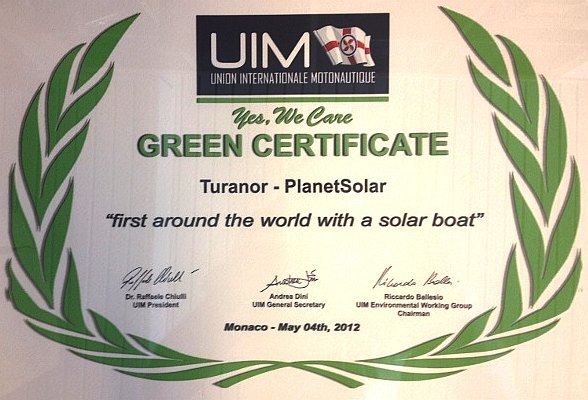
THE
REVOLUTION 1789 When
things are not working, there is nothing like a good shake up. Paris was centre stage for the
French
Revolution, triggered by a bad harvest in 1788, which caused food prices to rocket,
which in turn saw the sovereign debt reach an unprecedented level with
terrible consequences. On 14 July 1789, Parisians, appalled by the king's pressure on the new assembly formed by the Third Estate, took siege of the Bastille fortress, a symbol of absolutism, starting
the revolution and rejecting the divine right of monarchs to rule France. It
may have been a bloody affair, but rulers should remain sensitive to their
subject's needs - a duty of care sometimes overlooked even by elected
governments. Jean-Sylvain Bailly, the first Mayor, was elected on 15 July 1789, and two days later the national tricolour flag with the
colors of Paris (blue and red) and of the King (white) was adopted at the Hôtel de Ville by Louis XVI.
The Republic was declared for the first time in 1792. In 1793, Louis XVI and Queen Marie Antoinette were executed on the Place de la Révolution, in Paris, the site of many executions. The guillotine was most active during the "Reign of Terror", in the summer of 1794, when in a single month more than 1,300 people were executed. Following the Terror, the French Directory held control until it was overthrown in a coup d'état by Napoleon Bonaparte.
Napoleon put an end to the revolution and established the French Consulate, and then later was elected by
plebiscite as emperor of the First French Empire.
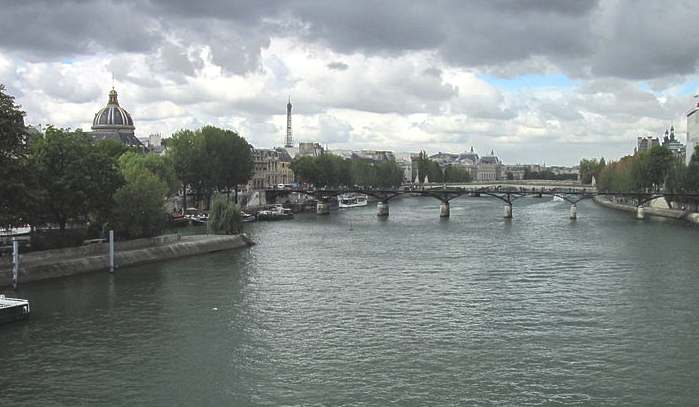
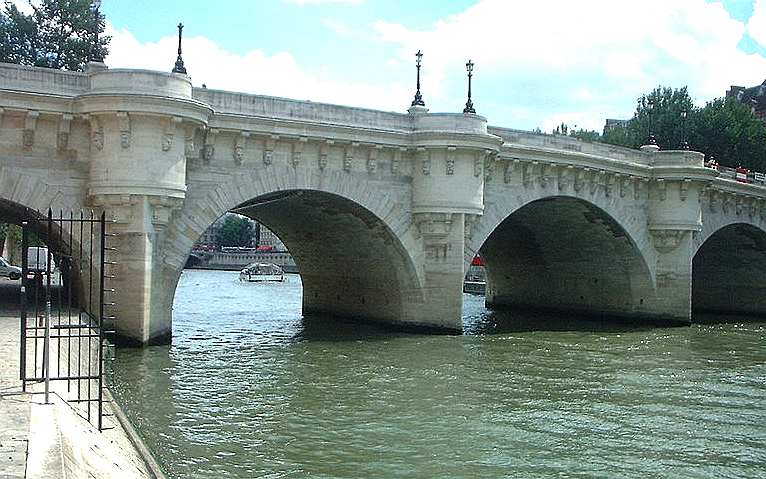
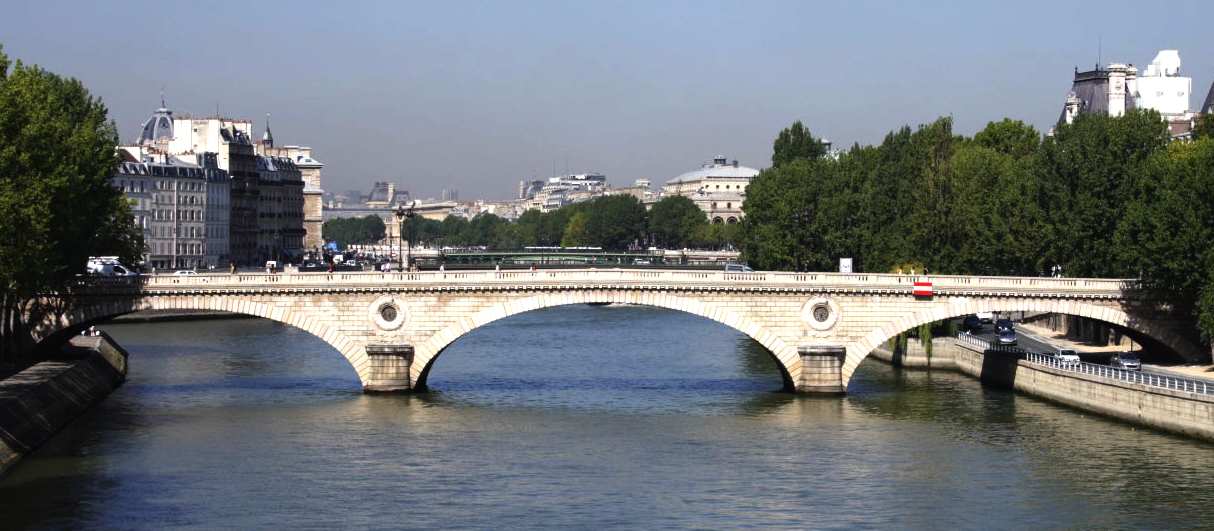
Three
famous views: River Seine bridges, Pont Neuf, and Louis-Philippe, Paris,
France 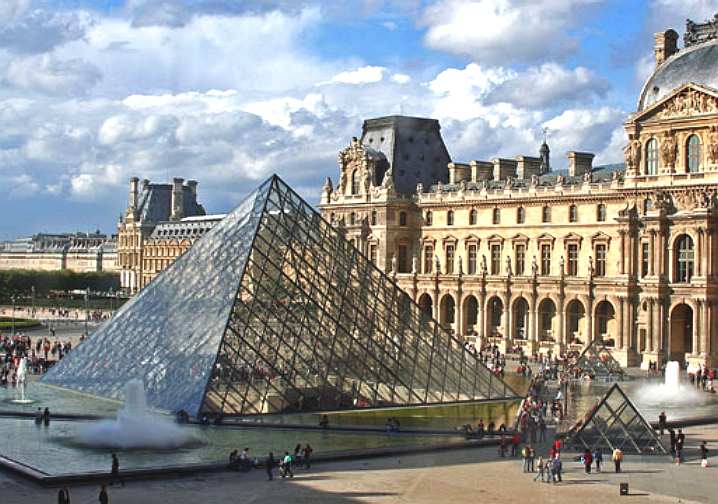
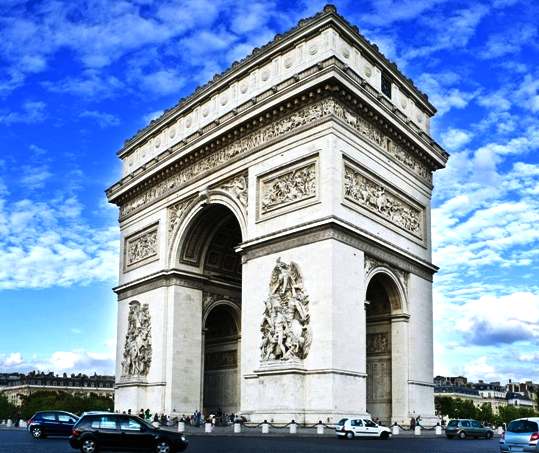
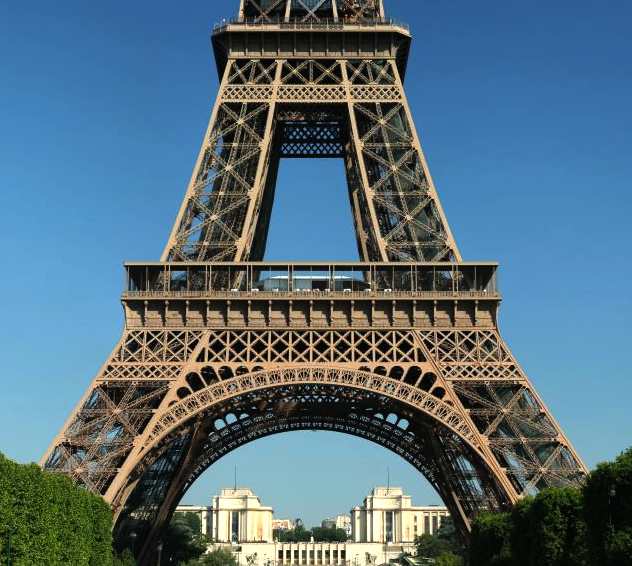
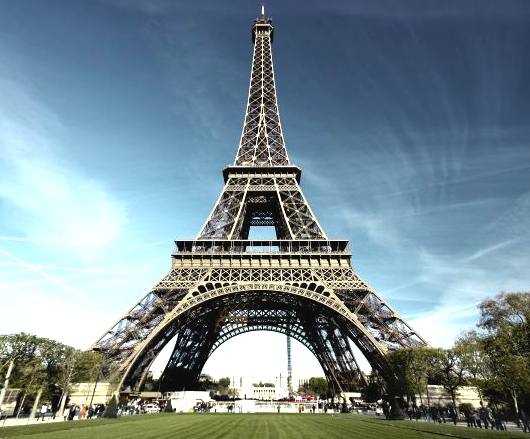
The
French City's most famous landmarks: The Louvre, Arch de Triumph and Eiffel
Tower. FUTURE
WORLD
RECORD CONTENDER 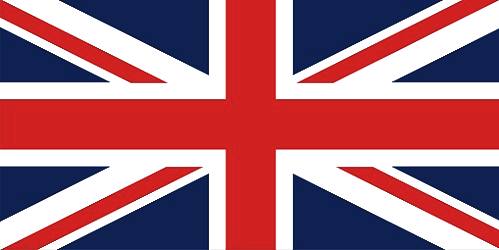 The
latest British 'Bluefish'
world record contender is somewhat longer at
40 meters (130 ft) and 16.2 meters (52.65 ft) wide in the water. The patent
Bluefish/SNAV platform also has more than twice the power to weight ratio of
Planetsolar and an anticipated average speed of 7-8 knots, with a top speed
of 18 knots. That will make the Bluefish platform the largest and the
fastest solar boat
in the world, once it is built.
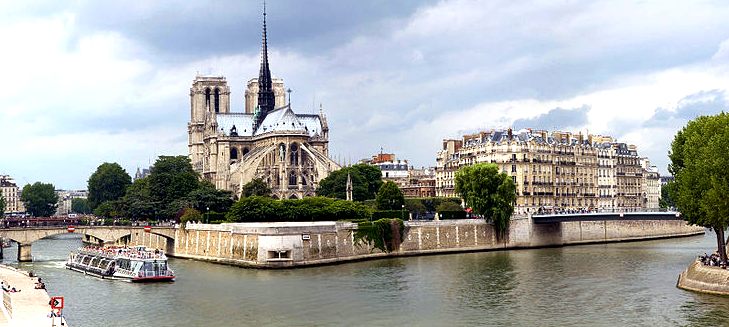
The
Notre Dame church, on the island, River Seine, Paris, France
Un bateau solaire en état d'ébriété pour la science
Le 4 juillet dernier, le vaisseau solaire quitte Boston pour faire cap sur Halifax au Canada avec à son bord l'équipage composé de 5
marins, de 3 scientifiques de l'Université de Genève et d'un chercheur du Woods Hole Oceanographic Institution du Massachusetts (le plus grand institut de ce type au monde). Ensemble, ils partent à la chasse aux vortex océaniques, ces gros tourbillons qui se détachent de la partie principale du Gulf Stream et qui influent sur les échanges thermiques avec l'atmosphère et sur le comportement du
phytoplancton.
Pourchasser ces tourbillons demande au MS Tûranor PlanetSolar de suivre une route dont il était jusqu'à présent peu habitué, composée de zigzags, qui rappelle le parcours d'un marin ivre un soir de
paye. Pourtant, il ne fait que suivre les instructions des scientifiques ! Transmis par le centre de contrôle (« Mission Control ») de l'Université de Genève, des cartes faites d'images prises par satellite renseignent sur la position exacte des zones d'intérêts. Les chercheurs indiquent alors au capitaine les points à
atteindre.
Ainsi, toutes les deux ou trois heures, de jour comme de nuit, le navire s'arrête pour permettre aux scientifiques de déployer la
CTD, une sonde capable de mesurer des paramètres physico-chimiques comme la conductivité
(mesure d'un courant électrique qui dépend de la teneur en sel), la température et la profondeur de
l'eau. A l'aide d'un treuil, la sonde plonge jusqu'à plus de 200 mètres de profondeur permettant ainsi d'obtenir un profil de l'Atlantique dans ce lieu précis.
Enfin, un nouvel instrument s'invite à bord : le Microtop II sun photometer. Un instrument prêté par l'agence américaine de la NASA (Administration nationale de l'aéronautique et de
l'espace). Bien que la NASA soit plutôt connue pour son programme spatial civil, elle est aussi active dans le domaine de la recherche aéronautique et notamment dans celui de l'observation de la Terre et du
climat. Cette dernière mission comprend la caractérisation et de la surveillance des aérosols. Ce photomètre indique l'épaisseur optique des aérosols soit à quel point ces derniers altèrent la « transparence de l'atmosphère », qui affecte la transmission de la lumière du soleil à travers l'atmosphère.
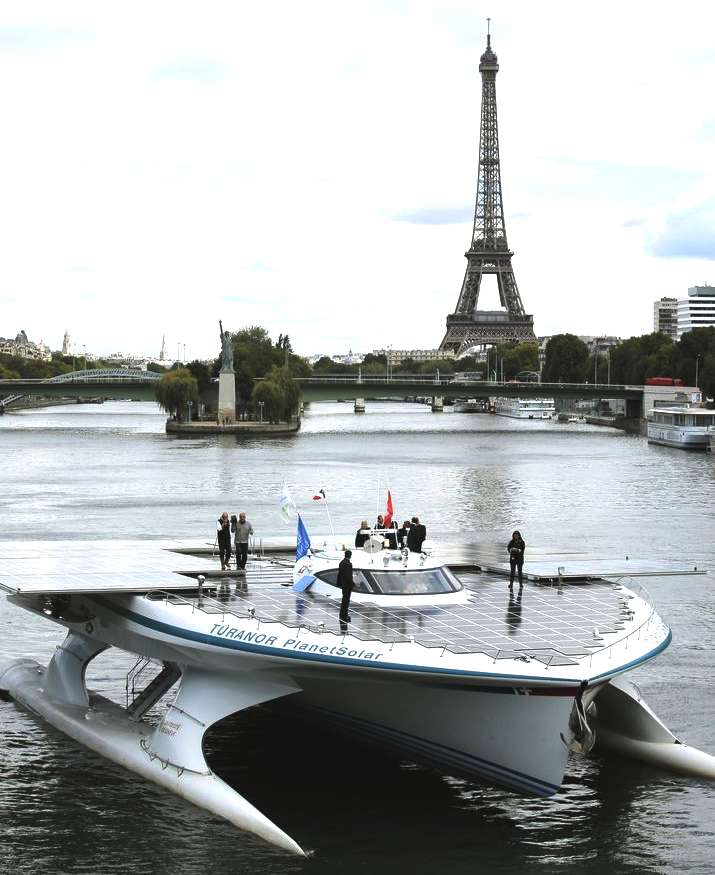
Bienvenus au Canada !
Après 11 jours de zigzagodromie, le gigantesque catamaran solaire jette l'ancre à Halifax, à la Marina du Waterfront Development. Cette escale en
Nouvelle-Ecosse a été ajoutée suite à l'adaptation de l'itinéraire de l'expédition « PlanetSolar DeepWater » afin de permettre le changement des coéquipiers scientifiques et quelques travaux de maintenance.
Toutefois, face à l'enthousiasme suscité par la venue du vaisseau, PlanetSolar a pris la décision d'organiser des événements destinés à la
presse, au public et aux autorités locales.
L'engouement autour du bateau est au rendez-vous et ce dernier devient rapidement l'attraction locale. Avec ses courbes dignes d'un film de science-fiction, le catamaran surprend et séduit ! Dès l'aube ce sont d'abord les joggers qui viennent saluer le
navire. Un peu plus tard, un cycliste, comme hypnotisé, percute un réverbère. Tous veulent leur photo, des mariés posent devant l'étrave, un aveugle se fait décrire le
navire, dans le parc guitaristes et tambourinaires attirés par la foule affluent. Côté
mer, les bateaux touristiques ont inclus le bateau solaire dans leur
parcours. Un patron de bar, un poil inconscient, propose même à l'équipage de venir passer la soirée dans son établissement.
PlanetSolar a souvent suscité l'enthousiasme mais Halifax restera bel et bien gravé dans la mémoire de l'équipage. Pour remercier les canadiens d'un tel
accueil, une après-midi portes ouvertes a été organisée, inutile de préciser que la file d'attente était
longue. Plus de 400 personnes montent à bord et redescendent en s'exclamant « ammaaaiiizzzing »…
L'emballement ne se limite pas au public et s'étend jusqu'aux institutions locales. En
effet, les coéquipiers scientifiques de l'Université de Genève sont invités à visiter l'Université de Dalhousie qui figure parmi les plus grandes université
canadiennes. Ils ont aussi été conviés à l'Institut de Bedford, le plus important institut de recherches océanographiques du Canada qui compte plus de 600
scientifiques, ingénieurs ou encore gestionnaires des ressources naturelles et de
l'environnement. Une belle opportunité pour échanger sur les enjeux de l'expédition « PlanetSolar DeepWater » !
PlanetSolar et l'Université de Genève tirent un bilan positif de cette
escale, tant d'un point de vue médiatique, publique que scientifique. Les derniers jours ont été dédiés à la rotation de l'équipe
scientifique, un passage de relais animé où les scientifiques sur le départ partagent avec une certaine nostalgie leurs expériences, bons souvenirs et astuces sur la vie à bord auprès des nouveaux
venus.
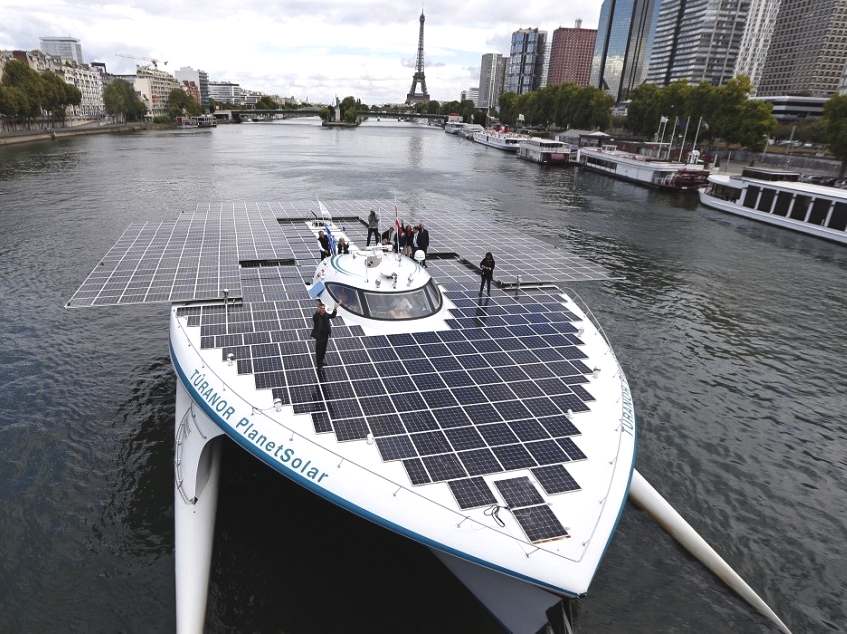
Départ vers le Nord
Le 22 juillet dans la matinée, le navire largue les amarres et quitte l'hospitalière Halifax pour faire cap sur le
Nord, directopm St-John's en Terre-Neuve et ainsi permettre aux chercheurs de poursuivre leurs recherches sur les vortex océaniques. Le navire vogue jusqu'à la limite de la plaque
continentale, de là, le fond marin plonge abruptement de 100 à plus 1000 mètres de
profondeur. Un lieu idéal pour observer les courants et les changements de température. La CTD reprend du service et s'enfonce jusqu'à 200 mètres de fond !
Au cours de ces mesures, l'équipage a eu le droit à la visite improvisée de dauphins ! La zone de recherche semble être très riche en nutriments qui amènent les poissons qui, à leurs tours, attirent les mammifères
marins.
La récolte de données continue dans un rythme soutenu où rien n'est laissé au
hasard. En suivant les cartes fournies par le centre de contrôle genevois, les scientifiques sondent les zones d'intérêt de jour comme de
nuit. La difficulté repose entre autre sur le maintien verticale de la sonde car le bateau est soumis au courant et au vent. Si le câble dévie de sa
trajectoire, outre le danger de se faire sectionner par les hélices, il pourrait endommager la coque du bateau ou encore s'enrouler dans le
gouvernail. Gérard veille à donner des instructions précises à la cabine de pilotage pour stabiliser le bateau. La zigzagodromie continue,
Terre-Neuve est proche mais le vent n'est pas en notre faveur et souffle en sens contraire!
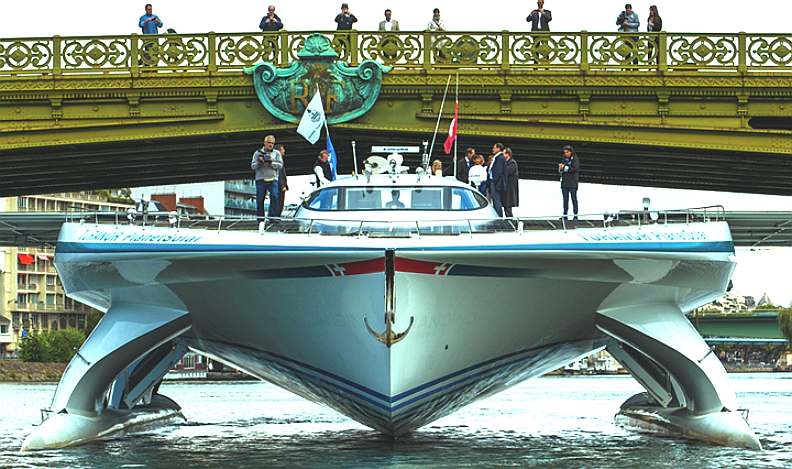
Arrivée à St-John's
Le point le plus septentrional jamais atteint par le MS Tûranor PlanetSolar a été rejoint ! L'équipage amarre au port de St-John's, la capitale de
Terre-Neuve. Cette région a la réputation d'être fréquemment soumise à un épais brouillard car c'est là que le courant froid du Labrador vient rencontrer le courant chaud du puissant Gulf Stream. Parvenir à St-John's s'est donc révélé être un véritable défi en termes de navigation solaire lors duquel le MS Tûranor PlanetSolar s'est malgré tout vu obligé d'enclencher parfois ses générateurs de
secours.
St-John's est une escale principalement axée sur le changement des équipiers
scientifiques, la réalisation de travaux techniques et sur le
ravitaillement. Arrivé le 1er août, le navire restera amarré au port principal de St-John's pendant 5
jours. Quelques jours qui ont permis une nouvelle fois au bateau de prendre la pause face aux objectifs de la presse et des curieux venus en nombre saluer le catamaran et son équipage !
Le 6 août, le navire largue les amarres et s'élance pour la deuxième fois cette année dans l'immensité de l'océan
Atlantique. Quelques milliers de kilomètres attendent le navire avant sa prochaine escale à Oostende en
Belgique.
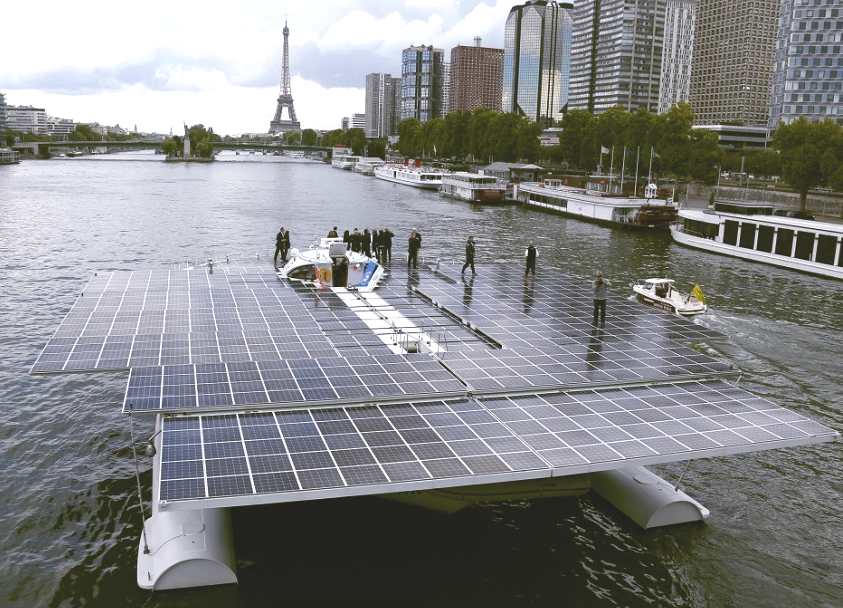
À travers l'Atlantique
23 jours, c'est le temps qu'il a fallu au MS Tûranor PlanetSolar et son équipage pour sillonner l'Atlantique Nord et les 4500 kilomètres qui séparaient la côte canadienne à celle de la
Belgique. La récolte de données inédites sur le Gulf Stream s'est poursuivie mais les conditions de navigation ont été
difficiles. Le soleil s'est fait rare et a joué avec les nerfs de nos marins qui ont dû quotidiennement optimiser la consommation en énergie du navire et garantir sa progression vers l'Europe et
cela, en s'assurant que les coéquipiers scientifiques puissent effectuer leur série de
mesures.
Ce n'est pas uniquement le soleil qui est venu contrarier l'avancée du navire mais aussi les courants et les vents
contraires, atteignant parfois 25 nœuds, mais le catamaran de presque 100 tonnes a déjà « roulé sa bosse » et a tenu bon ! La côte du vieux continent a été atteinte le 28 août, à Oostende plus précisement (après une courte escale technique à
Mylord, GB), pour le plus grand bonheur de l'équipage qui regagne l'Europe après 4 mois passés sur le continent américain ! C'est depuis Oostende que la dernière phase de mesures de l'expédition scientifique « PlanetSolar DeepWater » aura lieu. Cette dernière étape a un intérêt particulier pour l'équipe scientifique puisqu'il s'agira de collecter des données dans l'eau et dans
l'air, aux abords d'une zone urbaine. En effet, après Oostende, le navire se dirigera en direction de Londres pour une escale riche en événements ! PlanetSolar et l'Université de Genève poursuivront à communiquer sur les enjeux de la mission scientifique « PlanetSolar DeepWater » et à sensibiliser le public à la problématique du changement
climatique.
Restez informés sur l'expédition PlanetSolar DeepWater et suivez-nous !
Suivez-nous durant notre campagne 2013 grâce à notre site internet et à travers les réseaux sociaux Facebook, Twitter et Instagram !
PlanetSolar remercie chaleureusement ses partenaires 2013 !
Pour financer cette campagne 2013, PlanetSolar SA bénéficie du soutien de l'Université de Genève, Ciel électricité, Switcher, Association suisse des
AOC-IGP, Younicos, Plantbacter, Actides, GoPro, Jean-René Germanier SA, BCCC
Avocats, Tempur, Hempel, Présence Suisse, Energissima, l'UIM, YELLO et Waste Free Oceans.
AWARDS
PlanetSolar
received the following awards:
* Global +5 Innovative Prize, presented by The Global Journal, October 2012
* Award of Flag 71,
Raphaël Domjan, MI’11 PlanetSolar,
Explorers Club Flag
* 2011 Environmental Award, Special mention environmental
benefit
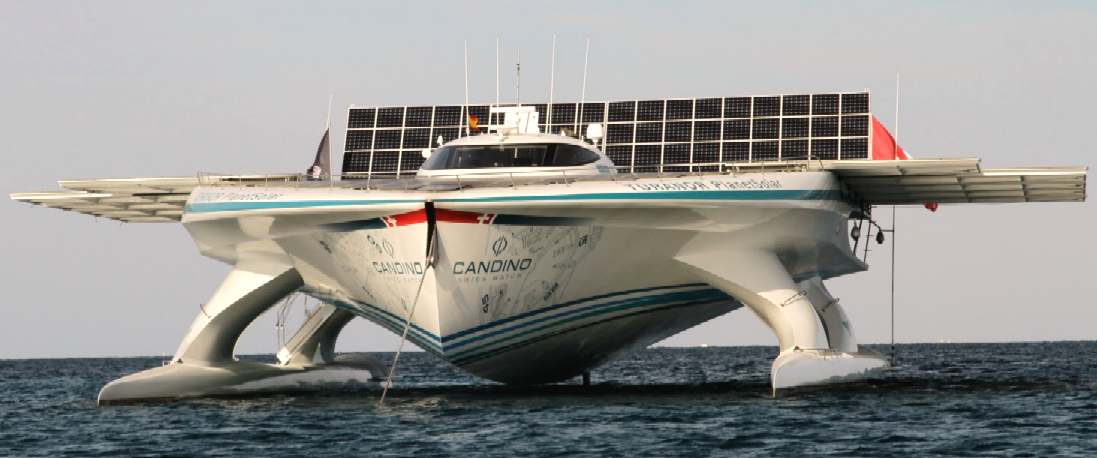
The
PlanetSolar on its way to visit Paris, France on 10th September 2013
LINKS http://cleantechnica.com/2013/09/11/planetsolar-in-paris-successful-end-of-her-2013-campaign/ http://www.huffingtonpost.com/2013/09/10/turanor-planetsolar_n_3900159.html http://www.mystatesman.com/ap/ap/top-news/solar-boat-reaches-paris-after-crossing-atlantic/nZrw8/ http://bigstory.ap.org/article/solar-boat-reaches-paris-after-crossing-atlantic http://www.connexionfrance.com/Solar-powered-PlanetSolar-Paris-Seine-Gulf-Stream-15031-view-article.html http://www.ibtimes.co.uk/articles/505044/20130910/turnanor-planetsolar-ends-scientific-voyage-gulf-stream.htm Le
figaro Breves Nautisme 2013-09-10 planetsolar conclut sa campagne 2013 a
paris http://nautisme.lefigaro.fr/breves-nautisme/expo
planetsolar fait escale a paris http://www.planetsolar.org http://www.paris-normandie.fr/article/rouen/planetsolar-le-plus-grand-bateau-solaire-du-monde-en-escale-a-rouen http://www.guinnessworldrecords.com/ http://challengers.guinnessworldrecords.com/ http://www.charterworld.com/news/planetsolar-reaches-london-final-stage-deepwater-scientific-expedition http://www.charterworld.com/news/tranor-planetsolar-catamaran-reaches-canary-islands-1st-solar-boat-expedition CBS
Solar boat shines light on suns power PlanetSolar Worlds-largest-solar-powered-boat-powers-arrives-Britain-spectacular-style.html?ito=feeds-videoxml http://www.mby.com/news/535154/planetsolar-world-s-largest-solar-powered-boat-visits-london http://www.wharf.co.uk/2013/08/worlds-largest-solar-powered-s.html#more The
worlds largest SOLAR boat breaks world record crossing Atlantic just 22
days http://www.nytimes.com/2013/06/25/science/solar-boat-harnessed-for-research.html New
York Times solar
boat harnessed for research http://solar.calfinder.com/blog/solar-politics/solar-boat-lands-cop16/ economic
times india ms-turanor-planetsolar-worlds-largest-solar-boat http://oweolar.info/2012/09/page/33/ http://www.newscientist.com/blogs/shortsharpscience/2011/08/solar-powered-yacht-docks-at-h.html http://au.businessinsider.com/oceanographic
campaign to study the gulf stream http://www.cbsnews.com/8301-35040_162-57591895/solar-boat-shines-light-on-suns-power/ http://www.planetsolar.org/follow-us/planetsolar-awards http://www.ship-technology.com/projects/planetsolar/
Design
concept -
Raphael
Domjan -
PROMOTIONAL
TOUR 2012
English - Swiss - French - History - Links - Homecoming

The
captain of a solar powered ship takes on pirate whalers
with
a $Billion dollars riding on the conclusion.
ADRIATIC
- ARCTIC
- ATLANTIC - BALTIC
- BERING
- CARIBBEAN - CORAL - EAST
CHINA - ENGLISH CH - GULF
MEXICO
GOC
- INDIAN
- MEDITERRANEAN -
NORTH SEA - PACIFIC
- PERSIAN GULF - SEA
JAPAN - STH
CHINA
PLANKTON
- PLASTIC
- PLASTIC
OCEANS - SEA
LEVEL RISE
|














